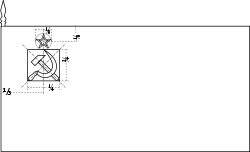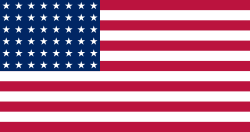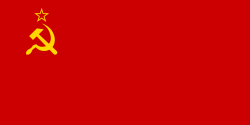Josef Stalder
| Josef „Sepp“ Stalder | |||||||||||||||||||||||||
|---|---|---|---|---|---|---|---|---|---|---|---|---|---|---|---|---|---|---|---|---|---|---|---|---|---|
| Persönliche Informationen | |||||||||||||||||||||||||
| Nationalität: | |||||||||||||||||||||||||
| Disziplin | Gerätturnen | ||||||||||||||||||||||||
| Spezialgerät/e: | |||||||||||||||||||||||||
| Geburtstag: | 6. Februar 1919 | ||||||||||||||||||||||||
| Sterbetag: | 2. März 1991 | ||||||||||||||||||||||||
Medaillen
| |||||||||||||||||||||||||
Josef «Sepp» Stalder-Fuchs (* 6. Februar 1919; † 2. März 1991) war ein Schweizer Kunstturner.
Stalder nahm 1948 und 1952 an den Olympischen Sommerspielen teil. Er gewann in verschiedenen Disziplinen insgesamt sieben Medaillen, darunter 1948 in London eine goldene am Reck. 1952 wurde er in der Schweiz als Sportler des Jahres ausgezeichnet. 1953 gewann er das internationale Jahn-Gedächtnisturnen auf der Berliner Waldbühne vor 12'000 Zuschauern.[1]
Die «Stalder-Grätsche» ist nach ihm benannt, da er als weltweit erster Turner eine Grätsche am Reck zeigte.
Erfolge
- Olympische Sommerspiele 1948: Gold am Reck, Silber im Mannschaftsmehrkampf, Bronze am Barren
- Olympische Sommerspiele 1952: Silber am Reck, Silber im Mannschaftsmehrkampf, Bronze am Barren, Bronze im Einzelmehrkampf
Literatur
- Erich Kamper, Bill Mallon: Who’s Who der Olympischen Spiele 1896–1992. Who’s Who at the Olympics. AGON Sportverlag, Kassel 1992, ISBN 3-928562-47-9.
Weblinks
- Josef Stalder in der Datenbank von Olympedia.org (englisch)
Einzelnachweise
- ↑ Turnen. Erfolg Josef Stalders beim Jahn-Gedächtnisturnen in Berlin. In: Dies und Das – Hausblatt der Kantonalen Strafanstalt Lenzburg, 15. Jahrgang, Nr. 11, 18. Juli 1953, S. 3. (PDF)
| Personendaten | |
|---|---|
| NAME | Stalder, Josef |
| ALTERNATIVNAMEN | Stalder-Fuchs, Josef (vollständiger Name); Stalder, Sepp (Spitzname) |
| KURZBESCHREIBUNG | Schweizer Turner |
| GEBURTSDATUM | 6. Februar 1919 |
| STERBEDATUM | 2. März 1991 |
Auf dieser Seite verwendete Medien
Die quadratische Nationalfahne der Schweiz, in transparentem rechteckigem (2:3) Feld.
Olympic Rings without "rims" (gaps between the rings), As used, eg. in the logos of the 2008 and 2016 Olympics. The colour scheme applied here was specified in 2023 guidelines.
Flag of the Germans(1866-1871)
Flag of the Germans(1866-1871)
US Flag with 45 stars. In use 4 July 1896–3 July 1908. Created by jacobolus using Adobe Illustrator, and released into the public domain. This flag was used during the Spanish-American War.
US Flag with 45 stars. In use 4 July 1896–3 July 1908. Created by jacobolus using Adobe Illustrator, and released into the public domain. This flag was used during the Spanish-American War.
Pan-Slavic flag. Emerged from 1848 Prague pan-Slavic conference, or interpretations of the resolutions of the conference. Drawn by Fibonacci.
US Flag with 48 stars. In use for 47 years from July 4, 1912, to July 3, 1959.
Variant version of a flag of Japan, used between January 27, 1870 and August 13, 1999 (aspect ratio 7:10).
Variant version of a flag of Japan, used between January 27, 1870 and August 13, 1999 (aspect ratio 7:10).
(c) I, Cmapm, CC BY-SA 3.0
The flag of the Soviet Union (1955-1991) using a darker shade of red.

(c) I, Cmapm, CC BY-SA 3.0
The flag of the Soviet Union (1955-1991) using a darker shade of red.

Autor/Urheber: Scroch, Lizenz: CC BY-SA 3.0
Flag of Bulgaria (1971-1990). Flag of Bulgaria with Bulgarian coat from 1971.
Autor/Urheber: Scroch, Lizenz: CC BY-SA 3.0
Flag of Bulgaria (1971-1990). Flag of Bulgaria with Bulgarian coat from 1971.
Pictograms of Olympic sports - Gymnastics (artistic). This is unofficial sample picture. Images of official Olympic pictograms for 1948 Summer Olympics and all Summer Olympics since 1964 can be found in corresponding Official Reports.
(c) Magmar452, CC BY-SA 3.0
Illustration des barres parallèles, engin de compétition en gymnastique artistique
Horizontal Bar
Pan-Slavic flag. Emerged from 1848 Prague pan-Slavic conference, or interpretations of the resolutions of the conference. Drawn by Fibonacci.


















